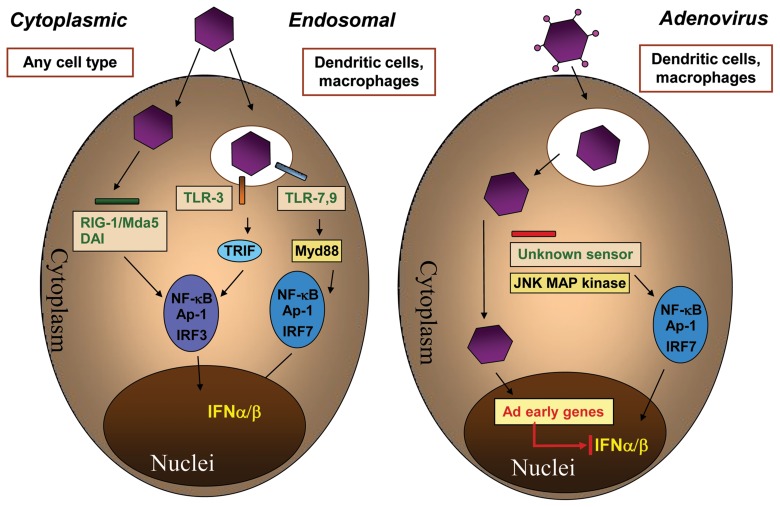Fig. 5.
Adenovirus elicits IFN-αβ production by a novel viral induction pathway. Left: Type-I IFN induction pathways by viruses other than Ads. Recognition of viral RNAs or DNA in the cytoplasm leads to IFN-αβ production via the RNA helicases RIG-I/MDA-5 and the DNA sensor DAI requiring IRF3 in any infected cell type. Alternatively, in dendritic cells and macrophages, endosomal TLR3 or TLR7-9 activation leads to the induction of IFN-αβ by activating IRF3 or IRF7, respectively. Right: Adenoviruses are recognized in mononuclear phagocytes after endosomal escape in the cytoplasm by a so far unknown receptor requiring JNK MAP kinases and IRF7. This activates type-I IFN production independent of TLRs, RIG-I/MDA-5, DAI, and IRF3. Ad-induced IFN-αβ production is inhibited by viral early gene expression

